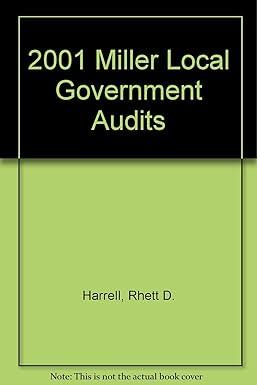Question
1 4. David Company produces two types of gears, Gear A and Gear B, with unit contribution margins of $6 and $8, respectively. Each gear
14. David Company produces two types of gears, Gear A and Gear B, with unit contribution margins of $6 and $8, respectively. Each gear must spend time on a special machine. The firm owns five machines that together provide 12,000 hours of machine time per year. Gear A requires 12 minutes of machine time; Gear B requires 24 minutes of machine time.
A. What is the contribution margin per hour of machine time for Gear A? Gear B?
B. If David faces only the production constraint (12,000 hours of machine time), how many units of Gear A should be produced? Gear B? What is the total contribution margin from this product mix?
C. Now suppose that David cannot sell more than 45,000 units of each type of gear. How many units of Gear A should be produced? Gear B? What is the total contribution margin from this product mix?
Figure 13-6.
Present value of $1
Periods | 4% | 6% | 8% | 10% | 12% | 14% |
1 | 0.962 | 0.943 | 0.926 | 0.909 | 0.893 | 0.877 |
2 | 0.925 | 0.890 | 0.857 | 0.826 | 0.797 | 0.769 |
3 | 0.889 | 0.840 | 0.794 | 0.751 | 0.712 | 0.675 |
4 | 0.855 | 0.792 | 0.735 | 0.683 | 0.636 | 0.592 |
5 | 0.822 | 0.747 | 0.681 | 0.621 | 0.567 | 0.519 |
6 | 0.790 | 0.705 | 0.630 | 0.564 | 0.507 | 0.456 |
7 | 0.760 | 0.665 | 0.583 | 0.513 | 0.452 | 0.400 |
8 | 0.731 | 0.627 | 0.540 | 0.467 | 0.404 | 0.351 |
9 | 0.703 | 0.592 | 0.500 | 0.424 | 0.361 | 0.308 |
10 | 0.676 | 0.558 | 0.463 | 0.386 | 0.322 | 0.270 |
Present value of an Annuity of $1
Periods | 4% | 6% | 8% | 10% | 12% | 14% |
1 | 0.962 | 0.943 | 0.926 | 0.909 | 0.893 | 0.877 |
2 | 1.886 | 1.833 | 1.783 | 1.736 | 1.690 | 1.647 |
3 | 2.775 | 2.673 | 2.577 | 2.487 | 2.402 | 2.322 |
4 | 3.630 | 3.465 | 3.312 | 3.170 | 3.037 | 2.914 |
5 | 4.452 | 4.212 | 3.993 | 3.791 | 3.605 | 3.433 |
6 | 5.242 | 4.917 | 4.623 | 4.355 | 4.111 | 3.889 |
7 | 6.002 | 5.582 | 5.206 | 4.868 | 4.564 | 4.288 |
8 | 6.733 | 6.210 | 5.747 | 5.335 | 4.968 | 4.639 |
9 | 7.435 | 6.802 | 6.247 | 5.759 | 5.328 | 4.946 |
10 | 8.111 | 7.360 | 6.710 | 6.145 | 5.650 | 5.216 |
15. Refer to Figure 13-6. Jimmy Reynolds a parent company of David is considering investing $10,000 in a project with the following cash revenues and expenses:
Revenues | Expenses | |
Year 1 | $20,000 | $18,000 |
Year 2 | $22,000 | $19,000 |
Year 3 | $22,000 | $20,000 |
Year 4 | $22,000 | $17,000 |
Year 5 | $25,000 | $17,000 |
Jimmy requires a minimum rate of return of 8%.
A. Calculate the net cash inflows in each of the five years.
B. What is the payback period?
C. What is the net present value of the investment?
16. Refer to Figure 13-6. Jimmy Renoldys company is considering an investment costing $110,000. The investment would return $45,000 per year in each of three years. Geary requires a minimum rate of return of 10%.
A. What is the payback period for the investment?
B. Using the Present Value of $1 table, calculate the net present value of the investment.
C. The internal rate of return is great than __________________% and less than __________________%.
D. Now assume that the investment includes equipment that can be sold at the end of the third year for $10,000. What is the present value of this investment?
WILL RATE LIFE SAVER FOR ALL CORRECT ANSWERED QUESTIONS......
Step by Step Solution
There are 3 Steps involved in it
Step: 1

Get Instant Access to Expert-Tailored Solutions
See step-by-step solutions with expert insights and AI powered tools for academic success
Step: 2

Step: 3

Ace Your Homework with AI
Get the answers you need in no time with our AI-driven, step-by-step assistance
Get Started


